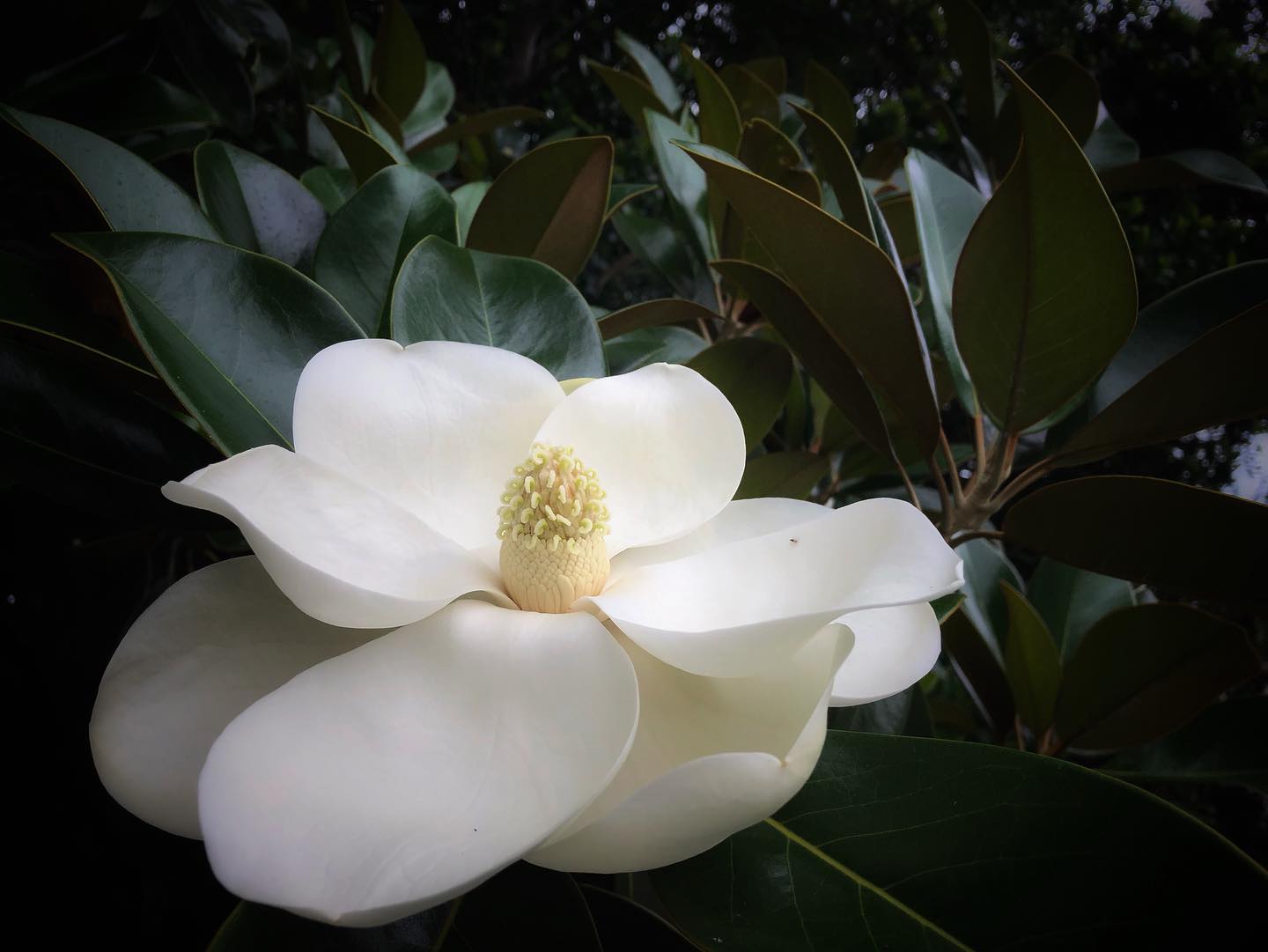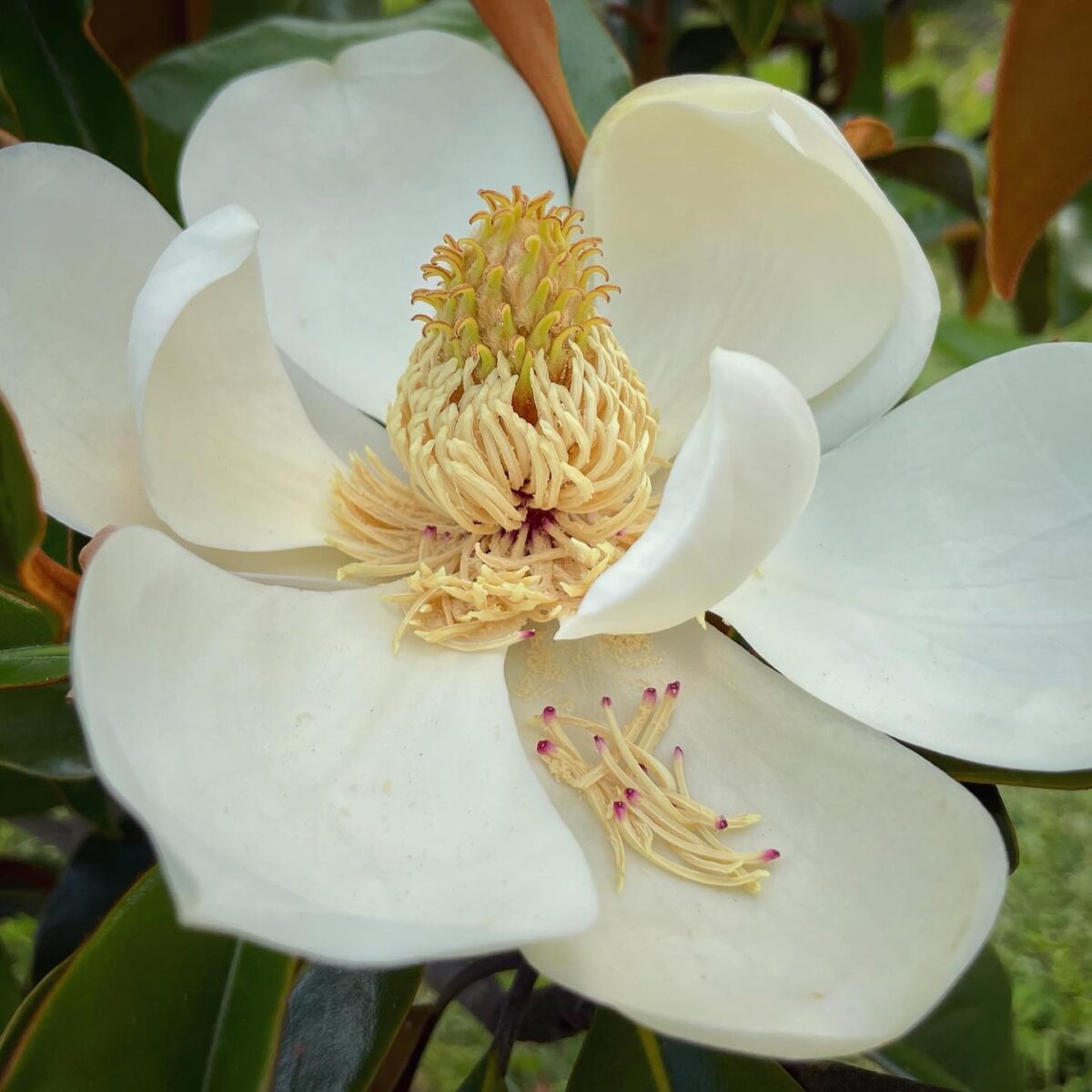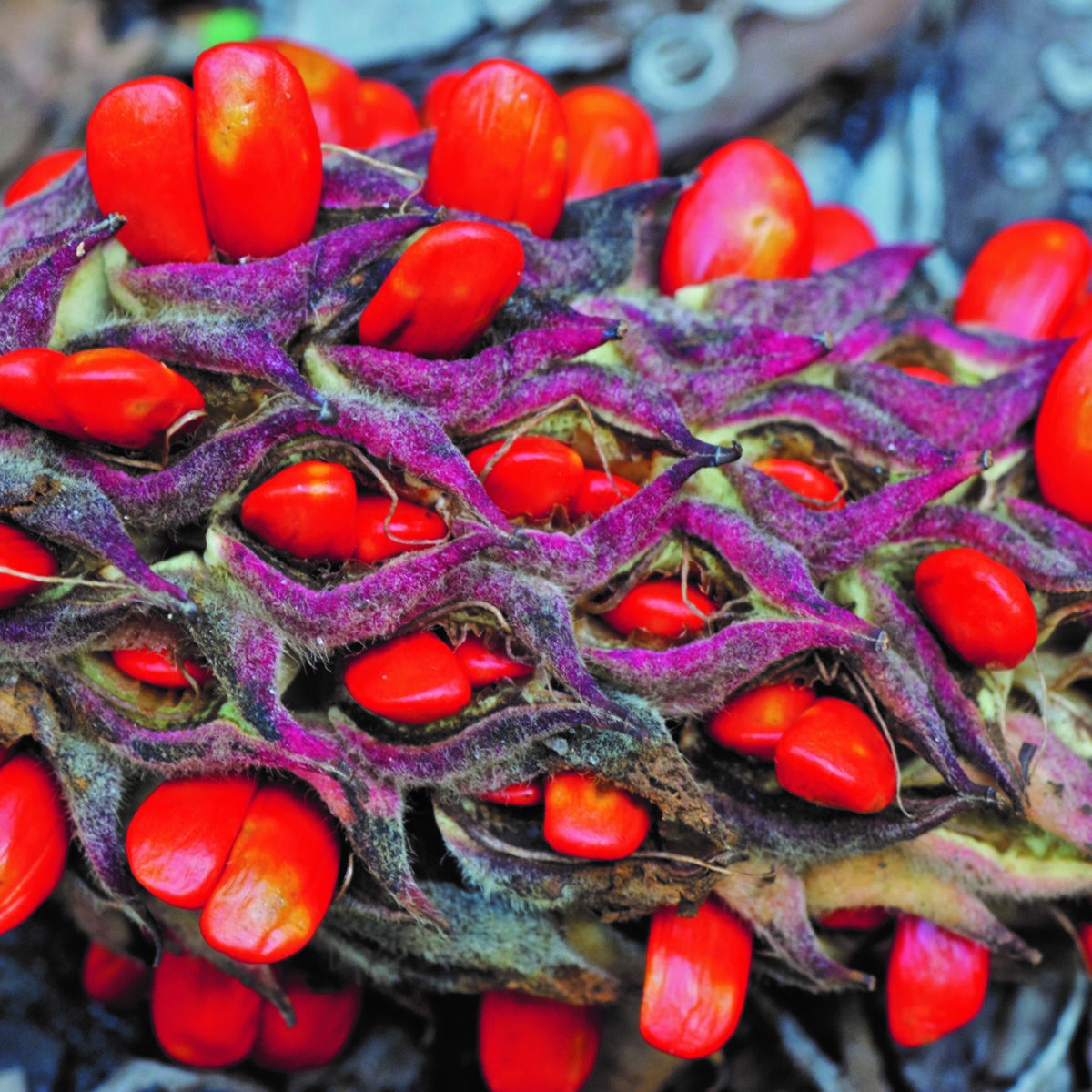Southern magnolia
Pictured above: Southern magnolia (Magnolia grandiflora) by Betsy Harris. Click on terms for botanical definitions. View post as a PDF.
Southern magnolia is a majestic and iconic evergreen tree found in mesic hammocks and slope forests in North and Central Florida. It is renowned for its showy fragrant flowers, dramatic dark green leaves, and stately form. The flowers are primarily pollinated by beetles. Its abundant autumn fruits are eaten by small mammals, turkey and quail.
Flowers are large (up to 12 inches in diameter), cuplike and solitary. Petals are thick, creamy white, waxy and number between 6 and 12 per flower. Blooms are highly aromatic, with a lemony or citronella-like scent. Leaves are broadly ovate and leathery with a shiny dark green upper surface and rust-colored underside. Leaves are alternately arranged and may be up to 10 inches long. The fuzzy, rose-colored fruit is a cone-shaped aggregate of drupe-like follicles. As the fruit ripens, the follicles turn bright red and shiny; they dangle from thin, threadlike filaments before falling.
Southern magnolia’s leaves can be dried and used to season soups or stews. Its flower petals make a delicious condiment when pickled.
The genus name Magnolia pays homage to French botanist Pierre Magnol (1638–1715). The species epithet grandiflora means “large flower.”
Family: Magnoliaceae (Magnolia family)
Native range: Panhandle, peninsula south to Highlands County.
To see where natural populations of Southern magnolia have been vouchered, visit florida.plantatlas.usf.edu.
Lifespan: Perennial
Soil: Moist, well-drained sandy, clay, or loamy soils
Exposure: Full sun to full shade
Growth habit: 40’+ tall with oval to pyramidal shape
Propagation: Cuttings, seed
Florida regions of landscape suitability: North, Central
Garden tips: Southern magnolia is one of the most beautiful flowering trees. It adds elegance and charm to any landscape. It is moderately drought tolerant but can withstand brief periods of inundation. It is also hurricane resistant. Flowering is most prolific when planted in full sun. The tree’s dense crown provides a deep shade, making it difficult to underplant.
CAUTION: It is estimated that there are well over 200 cultivars of this plant, and it is difficult to know where most have originated since the range of this species extends from North Carolina to Texas. Inquire with local growers as to which cultivars were developed from Florida native stock in your region. Non-cultivars are available from nurseries that specialize in native plants.
Southern magnolia trees are often available from nurseries that specialize in Florida native plants. Visit www.PlantRealFlorida.org to find a nursery in your area.
Learn more about Southern magnolia from the Florida Native Plant Society and the Institute for Regional Conservation.



